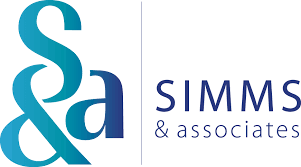Almost four years ago, Workplace by Meta celebrated 7 million paid subscribers. Fast forward to four months ago, and Meta announced the closure of Workplace by Meta, by August 31, 2025. What happened?
As a practice manager responsible for development and integration, and a former Director of Customer Success Operations at WorkJam, I am deeply involved in the industry. Let me share my insights on the limitations of frontline communications-only platforms and how we can address them.
Understanding the Frontline Workforce
The frontline workforce is a diverse and crucial segment of employees. These are the individuals consumers interact with daily at shops, restaurants, hotels, healthcare facilities, call centers, warehouses, and factories. Typically, they are hourly workers with limited direct communication with the head office, HR, or even their direct managers, often relying solely on text messaging.
During the pandemic, this lack of direct communication was starkly highlighted. Companies struggled to contact their frontline employees, underscoring the need for a robust communication platform.
Meta’s Approach and Its Shortcomings
Meta aimed to solve this problem by leveraging Facebook’s world-class functionality. They partnered with well-known implementation partners and garnered dozens of successful case studies. However, despite these efforts, Workplace by Meta, and similar communications-only solutions, failed to address the core issue: true engagement.
The Missing Element: True Engagement
For frontline communication platforms to succeed, engagement is key. Simply offering top-down communications or localized chat is insufficient. Hourly workers are unlikely to download an app just to receive corporate content, especially if there’s no clear benefit to them.
There needs to be a balance, a Yin and Yang, in frontline workforce management, providing tangible benefits to employees.
Essential Features for Effective Frontline Workforce Management
Leading solutions in frontline communications have recognized this and offer comprehensive tools and technologies to build and engage the frontline audience. These features include:
- Learning Tools: To help employees grow and improve performance.
- Task Management Tools: Enabling employees to perform more efficiently and effectively.
- Advanced Wage Solutions: Allowing employees to manage their finances better.
- Shift Pool Technologies: Creating a shift coverage culture by offering open shifts regionally.
- HCM Tools: Providing a unified place for timecards, schedules, PTO, and shift punches.
- Content Fencing Capabilities: Ensuring employees can only see and do things when appropriate.
- Comprehensive Communication Tools: Allowing seamless communication by region, role, banner, etc.
Workplace by Meta lacked these features, which ultimately led to its downfall.
Our Solution: Partnering with WorkJam
I am proud to partner with WorkJam, a frontline workforce management solution that integrates seamlessly within any WFM or HCM technology stack. WorkJam delivers on its promises, offering a suite of features designed to engage, grow, and retain your frontline workforce.
Conclusion: Embrace Comprehensive Workforce Management Solutions
The failure of Workplace by Meta highlights the necessity for comprehensive, feature-rich workforce management solutions. By focusing on engagement and providing tangible benefits to employees, businesses can ensure effective communication and a motivated, well-connected frontline workforce.
If you need to replace Workplace by Meta or any other similar solution, contact Simms & Associates today.
